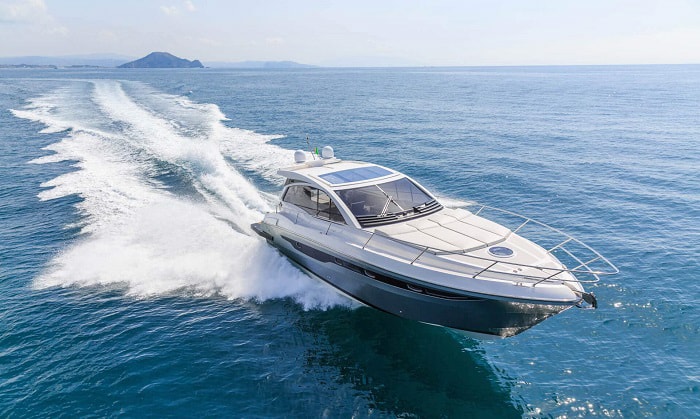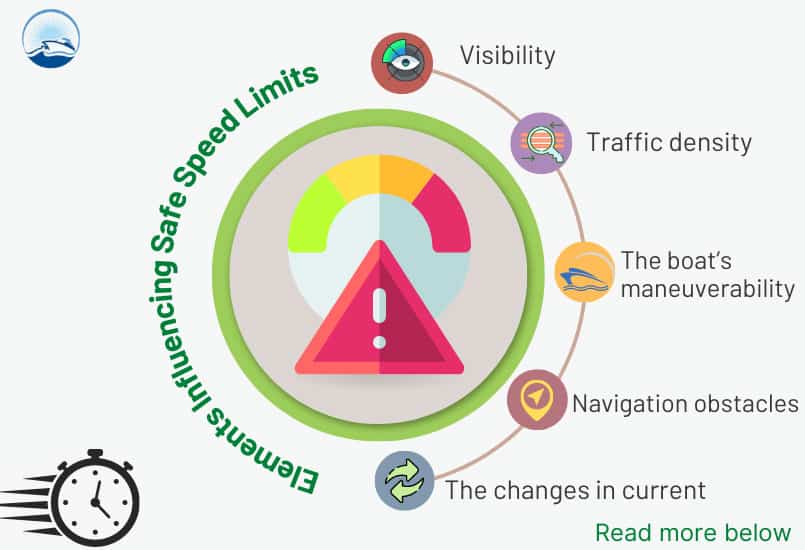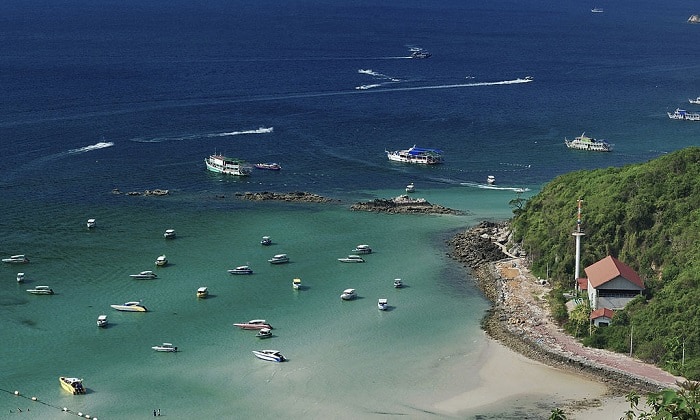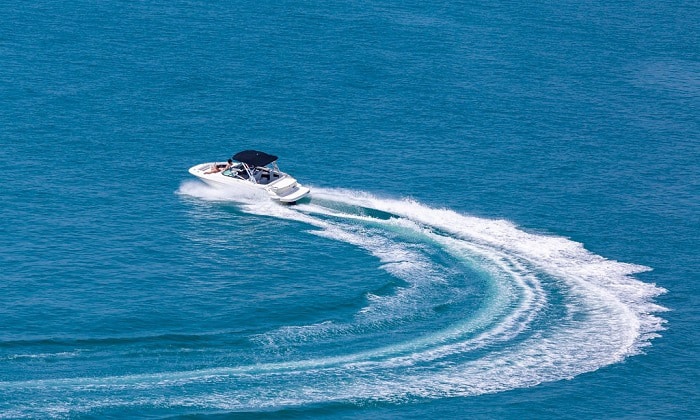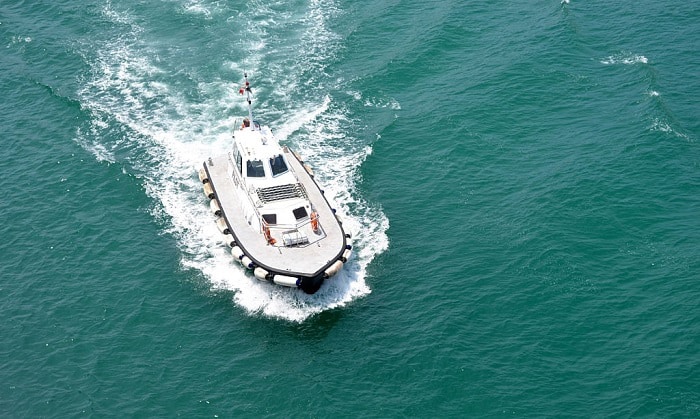Commuting by watercraft is just similar to traveling by other transportation on the road. Therefore, it is essential for boaters to follow certain regulations to guarantee the safety of passengers on board. One of the most important rules is speed limitation.
Traveling at a safe speed allows you to handle dangerous situations appropriately and cautiously since you will have enough time and distance to calculate and assess the circumstance accurately. Nevertheless, there is so much more to learn about ”what is considered a safe speed on a boat?” and if you are looking for an article that provides all knowledge about this issue, this is the perfect place for you!
In this post, we will provide the necessary information to answer the question “what is a safe speed for your boat?” as well as factors affecting speed limits so that you can understand this aspect better.
Moreover, tips to determine a safe speed based on different factors and further notices on traveling at an allowed speed in a vessel within real situations will be highlighted in this article. So, you and other sailors can practice this process without too much difficulty. Continue reading to learn more!
Table of Contents
The Importance of Commuting by a Vessel at a Safe Speed
Before knowing any further information, we need you to understand what is a safe speed. Given the situation and conditions, a safe speed is one that is less than the top speed at which the boater can take adequate and effective measures to prevent crashes and stop within such a reasonable distance.
There are many reasons why sailors should control their vessels at a safe speed. Speeding accidents are more likely to be serious, accounting for around one in every ten deaths or major injury occurrences, so reduce the speed to ensure a fun day on the lake.
A safe speed offers you adequate time to stop and redirect your vessel in case of an emergency, such as an accident, injury to persons, or damage to property. Furthermore, Breaking the speed limit on the ocean is just as dangerous as rushing on the road and can lead to fines.
It also endangers yourself, the passengers, and other individuals utilizing the waterways. Slowing down can help to lessen the severity of the damage. This is because traveling at fast speeds decreases your ability to respond to unforeseen threats. The quicker you travel, the longer it will take to come to a safe halt.
Elements Influencing Safe Speed Limits
I believe that the question of “what determines if a speed is safe for your boat?” has come up many times while boaters travel by their boat. Eventually, a safe speed is determined by several factors. These include the weather, times of day, kind of vessel, and sailor’s driving expertise. As the captain, you must continually assess and change your pace as you go.
When determining the speed of your watercraft, keep the following aspects in mind:
1. Visibility
When traveling in fog, rain, snow, or mist, as well as smoke, or glare, it is vital to reduce speed. Other obstacles, such as bridges, causeways, or river bends, also prevent you from observing the “big picture” forward.
Aside from darkness, navigating directly to the sun’s direction might affect visibility or even distance perception. You also should take appropriate care of the windshield by avoiding utilizing a spray that might cause build-ups.
In the nighttime or in the appearance of sunshine, spray build-up may become dangerous. Select a cleaner with a suitable formula, such as 303 Marine and Boat Bling.
2. Traffic density
Moving at fast speeds in densely populated locations is a huge no-no. Note that you should make the correct judgment while you’re moving at a safe speed. It will keep not just local boats secure, but also incoming watercraft safe.
When approaching moored ships, workboats, and bigger vessels, slow down. When traveling across a narrow waterway, use additional caution. Commercial boats typically display unique signs that must be observed.
Larger ones have limited movement. So, it’s better to make an effort to stay in a safe place, as colliding with them is more detrimental to a smaller vessel.
3. The boat’s maneuverability
Remember that this is one of the factors to consider when assessing if a speed is acceptable for your ship. This component is related to the distance required to convert and standstill. Apart from speed, the boat’s maneuverability is influenced by the craft’s structure, current, as well as wind.
These terms are unmarked items, including lights, buoys, or flags, that have been destroyed or relocated from their assigned location.
5. The changes in current
You must keep an eye on the wind and water since changes might occur at any time. As a result, it’s best to reduce speed so you can quickly control your boat when something unexpected happens. Sudden events, such as flying weariness and hammering, have a detrimental impact. They will not just create physical aches and pains since the consequences, such as injuries, might be severe.
Boat’s Speed While Traveling in Shallow Water
When you’re in shallow water, keep in mind that the base of your watercraft impacts its movement. Decelerate since the stern seems to dip, bringing you near to the bottom of the sea.
The stern can also produce a problem known as ‘bank suction.’ It occurs as the stern comes closer to the shore, with the bank’s pressure and cushion interfering. The opposing bank is then bounced by an unanticipated shear. This is a likely occurrence in a large area of shallow water. It doesn’t mean you can’t go there, but you may steer your boats to the middle of the shallow region.
The key thing you should do to prevent suction and cushion effects is to reduce speed. Another option for avoiding these continuous forces is to use some rudder shift. Suction, as well as cushion, are increased when approaching another ship in shallow water because of these arrangements:
- Whenever your ship’s draft is comparable to the depth of water in which you’re cruising.
- The nearness of the opposite vessel or shore.
- It’s hard to slow down when you’ve lost the capacity to maintain perfect bare steerage. Such an incident only demonstrates how difficult it is to maintain control of one’s speed when moving at a high rate.
Conclusion
Boaters are required to pay close attention to various aspects of safety. You must not only maneuver your boat appropriately but also be aware of what is going on around you. Keep an eye out for large vessels, visibility, signage, water depth, traffic congestion, and possible dangers. As it is not easy to be cautious all the time, it is essential to comprehend the knowledge about a boat’s safe speed.
Therefore, we hope that the above information and tips can help you practice traveling at a regulated speed easier so that even controlling cruise ships will be no more difficult for you! Besides, you also can find more information about boats such as how to mount a trolling motor on an aluminum boat or where can you find the maximum horsepower for your boat by searching on engine parts category.
Did you enjoy the article on what is a safe speed for your boat? Do you want to add anything else? Please let me know and leave a comment below.

Ten years of enjoying countless trips on boats never made me love them any less! So I am here to put all those experiences into good use for other boaters who want to have a safe and fun trip with their friends and families.

